The 140mm Slim Tower CPU Cooler Roundup: Thin & Light Done Just Right
by E. Fylladitakis on May 24, 2017 8:00 AM EST- Posted in
- Cases/Cooling/PSUs
- be quiet!
- Noctua
- Phanteks
- Cooler
- Thermalright
Be Quiet! Shadow Rock Slim
Be Quiet supplies their tower cooler in a black, sturdy cardboard box, with minimal artwork but plenty of information about the cooler printed on all sides of the box. The company straightforwardly advertises that this cooler is capable of handling CPUs with thermal design power (TDP) up to 160 Watts, but this figure alone does not tell much about the overall performance of a cooler.
Inside the box we found a frugal bundle, consisting of a one-fits-all backplate, mounting hardware, a syringe with thermal compound, and a leaflet with very basic installation instructions.
The Shadow Rock Slim initially appears to be a very simple tower cooler that has been designed for 140 mm cooling fans. A closer inspection however reveals a very complex fin cutout that has been developed so as to minimize aerodynamic drag and, in extend, the noise that is being created by the moving airflow. A thicker, decorative metallic plate with the company logo etched on it can be seen at the top of the fin array. Rounded metallic caps cover the heatpipe end points.
Despite its “slim” identification, the Shadow Rock Slim is not really a slim CPU cooler. It certainly is much smaller than the monstrous Dark Rock Pro 3 that we reviewed a couple of years back, but still the body of the cooler alone is 52 mm wide. It comes with one of the company’s better fans, a special 135 mm variation of their “SilentWings” series. These fans feature a rifle bearing engine, which greatly improves the lifetime of the fan relative to the typical sleeve bearings, all the while retaining similar low-noise operation characteristics.
The Shadow Rock Slim is designed with only four heatpipes and a slightly smaller base than that of the other coolers in this review. Its design is sound, with the two middle heatpipes that will be facing the bulk of the thermal energy flow expanding into the edges of the fin array, where the airflow is going to be greater. This is the only cooler of this review that does not have nickel-plated heatpipes, so we can expect that their vibrant polish will soon disappear due to oxidation. (Oxidation doesn't cause any real damage, but it does eventually affect the cooler’s aesthetics)
The lower half of the cooler’s base is also made out of copper but, unlike the heatpipes, it is nickel plated. It has also been polished down to an immaculate mirror finish. The top half of the base is solid aluminum and does look like a small heatsink, yet its contribution to the overall performance of the cooler will be negligible, it is only meant to provide mechanical cohesion and support for the mounting hardware.


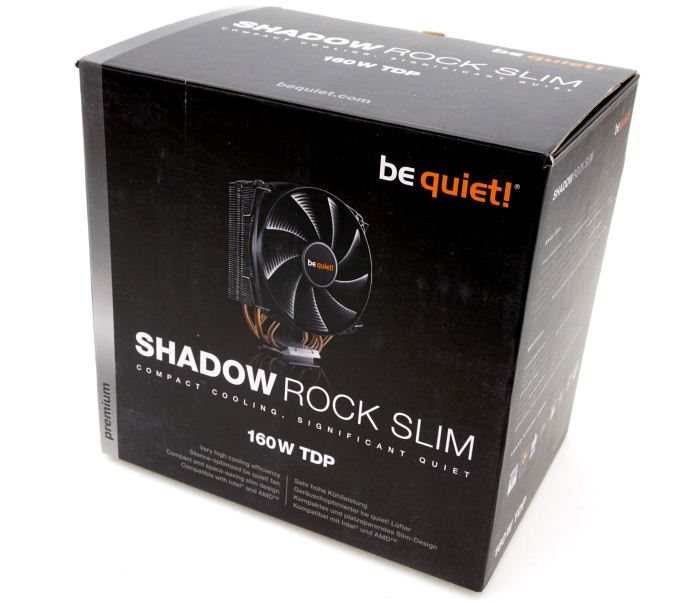
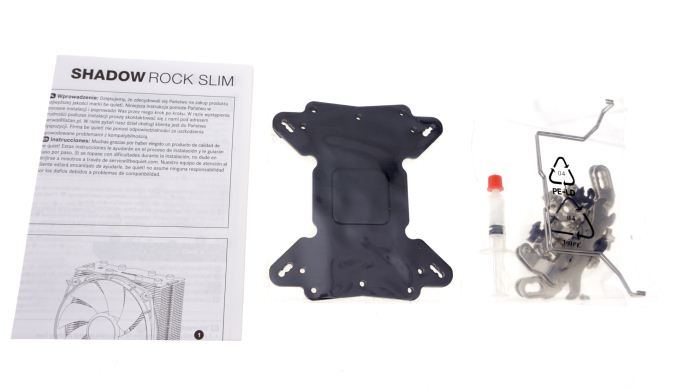

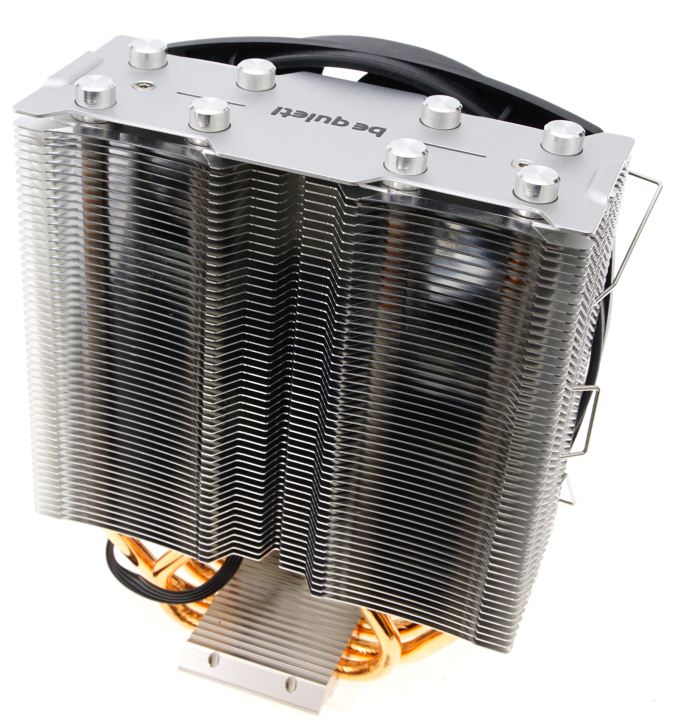
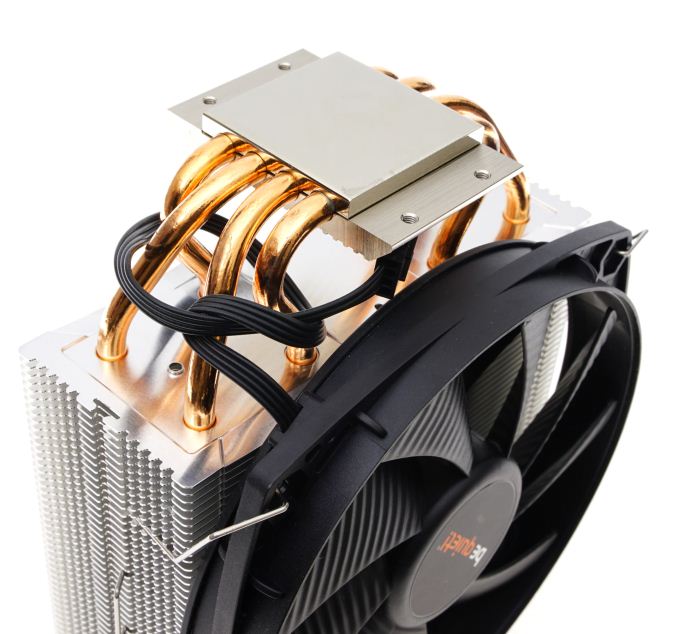
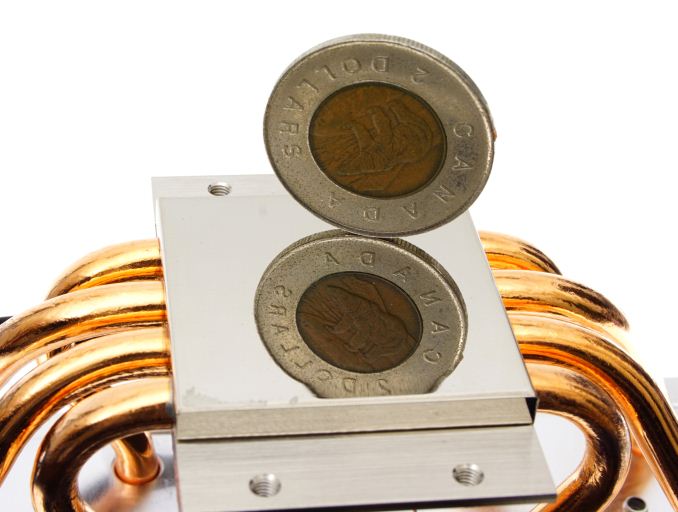








74 Comments
View All Comments
JoeyJoJo123 - Wednesday, May 24, 2017 - link
For online comments, there's shills, then there is everyone else. Shills which are just trying to spread around this meme that X company's products are the best thing sliced bread.Just buy whatever you want, regardless what anyone else thinks. Don't pay brands any particular attention, just buy the best product you can for the best price you can and pocket your savings.
mgilbert - Wednesday, May 24, 2017 - link
Nice, mature response, with the name calling and all. Grow up, then read the actual review. The reviewer said the same thing I did. Now, go read a few more reviews of coolers, and you'll find that virtually all of them agree with this review. Noctua is expensive, but worth it. Generally I agree with you - it doesn't pay to go by brand name - but there are exceptions, and Noctua is one of them.close - Wednesday, May 24, 2017 - link
Noctua also costs a lot more than the competition. So when you're adding 35% to the price tag of any of the other products tested then you usually expect better performance (not mandatory though). So drawing the conclusion that Noctua is king of the hill in general isn't that useful.So... there are expensive products, then there are cheaper products :). For some people 35% markup might not be worth the extra performance.
WinterCharm - Thursday, May 25, 2017 - link
So? If you want the best you often have to pay more for it.The "best" is the best.
If you want the "best within a price bracket" THEN you can finagle and weigh things against each other.
JoeyJoJo123 - Wednesday, May 24, 2017 - link
Does Noctua pay you in stock, dividends, or a salary to promote their products online? If not, why do you go out of your way to promote free advertising to another company who you owe nothing to? You made your trade; your money for their product, there's no stipulation that you have to continue to sing praises for their company for other people to be more negotiable to give that same company more money for more products.Likewise, if you're upset about being called out on literal shilling, then it's really you that needs to grow up.
Additionally, the performance roundup review written by E. Fylladitakis doesn't have anything in common with your post, which you attribute as stating that "(t)he reviewer said the same thing I did". Fylladitakis makes no catch-all branding statement. They evaluate the four products, they make the measurements, they compare the measurements, then make a conclusion about the products based on the measurements.
YOU, however, are making a blanket statement about all performance CPU cooling products developed by Noctua being "superior in virtually every respects, especially quality and support."
Those statements can't be anymore unalike in any way. The former was a controlled experiment to evaluate product performance followed by an analysis of the products, the latter (your comment) is an opinion; void of any metric of data or analysis.
If you look at the thermal performance in this roundup, it shows that the Thermalright cooler (at $47, the cheapest of the four measured in this roundup) to have the best thermal performance at low temperature loads (where most performance PCs, the target audience of these $50 tower cooling solutions, stay outside of gaming or benchmark loads), theorized by Fylladitakis to be due to the direct contact design of the heatpipes, and a close-second (literally 16.6 vs 16.8 degrees Celsius delta over ambient, figures well within a margin of error of measurement) at 150W loads (where most overclocked mainstream CPUs will sit at full load), and still competes closely at completely unrealistic synthetic 340W loads.
So given a $47 price for the Thermalright vs $65 price for the Noctua, given similar performance figures, it's pretty apparent which has the better value for mainstream performance PCs.
Ryan Smith - Wednesday, May 24, 2017 - link
I love a vigorous discussion, but you guys need to cool it, please. There is no place for profanity here on AnandTech.mgilbert - Wednesday, May 24, 2017 - link
Yet, my post gets deleted, but not his, despite its divisive, hateful, argumentative, obtuse, disrespectful, inappropriate nature. Sounds like four letter words aren't the only thing not allowed on Anandtech. Fairness has no place, either.Ryan Smith - Wednesday, May 24, 2017 - link
I have made my ruling. I give you guys exceptional leeway as I believe you need to be free to discuss technical matters, but I draw the line at profanity and pointless ranting. You guys are done, please move on.If you wish to discuss it in private please email me.
fanofanand - Thursday, May 25, 2017 - link
We love you Ryan! Even when we complain, whine and moan about x, y, or z not being tested the specific way WE would do it, we love you!Ruh-roh, now I"m shilling for Anandtech! Don't worry, my username checks out.
JackNSally - Wednesday, May 24, 2017 - link
I have to agree, Noctua is the best. I do recommend the Hyper 212 for budget builds though.